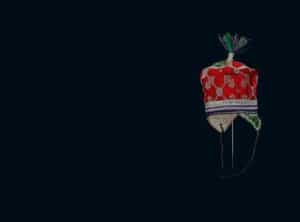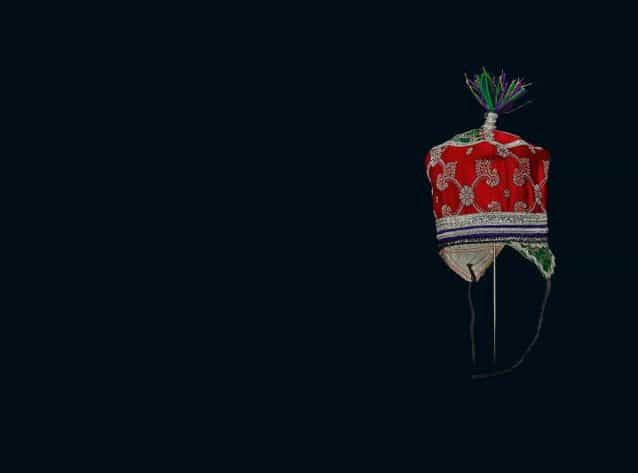The British Museum in London will open two new galleries in October with material from the Middle East, tracing the rich history and culture of the region.
One gallery will feature ceramics, glass and metalwork, while the other will display some 3,000-plus examples of textiles.
The British Museum’s Curator for the Modern Middle East, Fahmida Suleman, tells TRENDS that the textiles will include many pieces that have never been seen in public before. “We’ll have a huge showcase called ‘the Ottoman World’, then ‘Iran’, then ‘central Asia’, ‘south Asia’, and the ‘Arab World’,” says Suleman.
Showcasing past glory
A sneak preview of exhibits are featured in a new book, entitled Textiles of the Middle East and Central Asia: The Fabric of Life, published by Thames & Hudson in association with the British Museum.
There is a collection of model Palestinian hats from 1890 to the 1920s, illustrating the concept of ‘status’ in the past. There is one urban man wearing a tall fez (tarbush istambuli), a Hasidic Jew donning a velvet and fur hat (shtrayml), and a Muslim scholar a tarbush, wrapped in a white turban.

A villager wrapped his tarbush in a green turban to signify he followed the Qadariyya Sufi order, whereas a town porter donned a felt cap with a yellow head-cloth. Illustrating the importance of hats in pre-1948 Palestine, Suleman in The Fabric of Life quotes her predecessor at the British Museum, Shelagh Weir: ‘The head was the locus of a man’s honor [sic] and reputation, and it was proper and dignified that it should be covered, and shameful (ayb) to leave it uncovered, as it was for women.’
Exploring change
While exploring the past, The Fabric of Life acknowledges fashion designers such as Jerusalem-born Briton Thea Porter, Tunisia’s Azzedine Alaia and Turkey’s Rifat Ozbek. Their influence is found in the ‘modest fashion’ developed by modern labels such as DNKY and Tommy Hilfiger.
But is the fashion industry, indeed the modern world, replacing the skills of hand-made textiles? Suleman refers to central Asia: “Take the ikat textiles [woven with hand-spun silk yarn] from Uzbekistan, people have lost a perception of how difficult it was to make them. The individual threads are tie-dyed in various dye baths, starting with the lightest color and going darker and darker. Meanwhile, someone’s already figured out that we’ll have rams’ horns motifs at the back, pomegranate flowers on this side. Then the weaving happens, and then the making of the garment.”
“This industry survived through the patronage of the emirs of Bukhara and Samarkand, for example. Once the Russians moved in, they turned these into collectivized industries, standardized and slowly the textiles became machine-made.”
Altering over time
Palestinian textiles form approximately one third of British Museum’s Middle East collection, which results from the work of Britain’s Church Missionary Society. “They collected garments, sometimes ceremonial, sometimes daily life,” explains Suleman. “They would come back [to Britain from Palestine] and put on plays depicting the life of Jesus. When the Missionary Society closed in the 1960s, the British Museum bought a lot of their material.”
Suleman offers a more recent anecdote of change. In 2011 she put on an exhibition of Omani jewelry and textiles, which received great interest. “At the opening, young people stared at this garment for ages,” she says. “They told me it was something their grandmother would wear, not them. It was out of fashion.”
But amid change, there is continuity. “You will notice a Baluchi in Oman right away, particularly women,” says Suleman. “One of their many garments is illustrated in the book, a long dress with an A-shaped pocket and matching baggy trousers. It was made in 1990. Once the pocket kept embroidery thread, a bit of snuff, maybe some coins, but in 2010 – when I purchased it – it was their mobile phone, credit card and car keys. It’s a multi-purpose pocket and it screams ‘Baluch’.”
One generation to another
Designs flow from one generation to another. “There is a whole social element – often at times you are learning from your mother, your grandmother,” says Suleman. “There are specific motifs passed down.” And with great pride and care. “Looking through the book, you think, ‘In the Ottoman period, did women really use such luxurious towels?’ Well, they used them in special contexts. Children learned to embroider at a very young age, accumulating their dowries: their marital worth was judged by how well they cooked, how well they embroidered, how well they hosted.”
The Fabric of Life is full of surprises, reflecting Suleman’s mischievous streak. “Yes, I have chosen many things that haven’t been published or displayed before,” she says. “So many aspects of life are unlocked if we pay more attention to textiles.”








